The Last Film from Legendary Albert Maysles Might Inspire You to Direct as a Group
The definitive documentary filmmaker of American cinema, Albert Maysles, had been talking about making one film for nearly thirty years. Just before he passed away in March, he completed it.
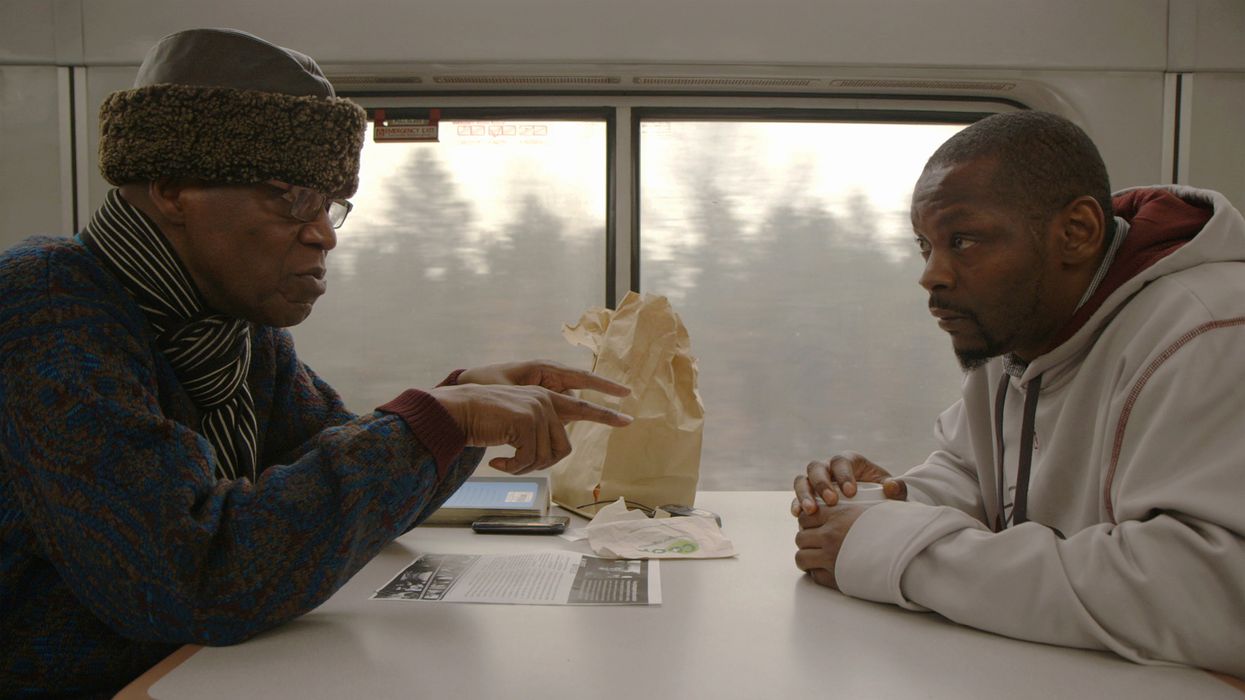
In Transit follows the passengers aboard America’s busiest long-distance train route, and involves a total of five directors sharing the credit -- a possible final thought from Al Maysles on the divisions (or lack thereof) between roles such as director and cinematographer. Before the premiere of In Transit at the 2015 Tribeca Film Festival, No Film School sat down with Director Nelson Walker, Supervising Producer Erika Dilday, and Story Producer Martha Wollner, who have known Maysles anywhere from 17 to 30 years.
When he passed away in March, Albert Maysles' body of work spanned half a century. Along with his brother David, he pioneered Direct Cinema. His films are quintessential viewing for would-be filmmakers. Grey Gardens was one of the first documentaries I ever watched -- I was shocked not only that a documentary could be that good, but also, that these films had been made a few decades ago! Many of us might be able to honestly say we were influenced in one way or another by Albert Maysles. Below is an excerpt from our interview where Nelson, Erika, and Martha break down what shooting on In Transit was like, as well as knowing Maysles in his last days.
It's exciting when you see a film where you have multiple voices coming together to create a common voice. In a way, I think that more closely approximates reality.
NFS: There are five people, Albert Maysles, Nelson Walker, Lynn True, David Usui, and Ben Wu, credited as directors on In Transit. What was the collaboration like making this film?
Nelson Walker: We knew that the train would be a really complicated environment to shoot in, and we knew that we wanted to have a number of people on the train because we didn't know how many trips we would be able to take. We thought, if we only have one shot at it, we need to have a number of people on the train to be able to get everything that we need. Al invited my wife Lynn and I to be a part of the project. Lynn and I have two great friends, who are also great filmmakers, Ben Wu and David Usui, and we invited them into the project as directors. This sort of the thing is very true to the Maysles tradition -- we weren't just inviting cinematographers on board to capture what was going on. We wanted everybody on the train who was part of our crew to be engaging with people, and to be uncovering what was on people's hearts and minds on the train.
So that's part of the decision around having so many directors. I think it's a great thing, because so many films you see these days are made by single directors, and they're almost like a projection of people's egos. That's not to diminish those at all, but it's exciting when you see a film where you have multiple voices coming together to create a common voice. In a way, I think that more closely approximates reality. We live in a world where it's not any one of our viewpoints, it's kind of the composite of all of them together. In a way this is like an ensemble piece, in terms of the direction of it.
Martha Wollner: You had to have trust and respect of people to work on the crew. You had to, because it was so intimate, and the nature of Nelson and Lin and Ben and David is that they had that innate sensibility, that respect for humanity. To me, it's really very beautiful. Al and David [Maysles] were the first people to say filmmakers, made by filmmakers. The editors onGimme Shelter were credited as filmmakers, and they were, I think, the first to have done that. So, it's very much in concert with that philosophy.
Al and David [Maysles] were the first people to say filmmakers, made by filmmakers.
NFS: Can you describe what shooting on the train was like?
Nelson: At any given time, we had as many as 6 cameras running. We had Albert and his camera. We had a camera that was documenting landscapes going by. Then we had Ben, David, myself, and Nick, who's our camera assistant, also shooting as well. So we were really covering the spaces as broadly as we could. It's a really big train. It's probably at least a couple of city blocks long, and passengers are constantly getting on and off. We knew that we needed to have multiple people shooting simultaneously since passengers are getting on and off.
We made sure we had people who were just being attentive to those spaces, and it ended up being very organic. Not something where we were giving marching orders.
When we first set out to film on the train, Martha and I did some scouting trips on different lines. In those scouting trips, I was really thinking very specifically about how to deploy the crews because we knew the different elements we had. We formed a plan, and at first we tried to adhere to that plan of action. But eventually, we really found the flow of the train, and there was no real regimented coordination. Everybody was really good about staying out of each other's way, about passing off other people they were filming with from one person to the next, and about making sure we had all of the different spaces covered at any given time. So we were working with the Amtrak crew, the observation car, the sleeper cars, the coach, the dining car. We made sure we had people who were just being attentive to those spaces, and it ended up being very organic, not something where we were giving marching orders.
Albert had been talking about doing this film for 30 years, and when we were discussing, “Well how are we going to get this done? How are we going to get on the train?” Albert said, “Well, we have to call Martha.”
NFS: You mentioned that Al encouraged all of you to be engaged with people on the train. What was the strategy to win the trust of the passengers?
Martha: It goes back to the people that are doing the film. If they have respect for the human condition, it shows, and Al would always say very quickly, "They know." When you engage with someone very quickly, they know. We were not making a presence on the train that was like, “We are Hollywood, we're here, and we don't care what y'all are doing.” We were more, “We want you to have a great trip, we are just here, we're with you.” Once people knew on the train, and they quickly knew, then it was really about the human contact. That goes back to Al's philosophy, if you connect to people with respect, then people come toward us. And if you can have trust, then you'll share stories.
Nelson: One thing I wanted to add about just the whole casting process, which I think is really interesting especially for other filmmakers to hear, is that what makes the subjects of this film so special is that when they're speaking to the camera, what you're seeing on camera is actually the process of either the camera person, or the camera person and Martha, really getting to know that person, and that story is coming out for the first time.
Erika Dilday: Albert had been talking about doing this film for 30 years, and when we were discussing, “Well how are we going to get this done? How are we going to get on the train,” Albert said, “Well, we have to call Martha.” And it was funny because Gillian, his wife, and also Albert's daughter said, “You can't do this unless you have Martha." So, finally we called Martha.
Certain people just had a natural chemistry with one person or the other. Martha was really instrumental in reading that chemistry, and sort of directing us to people who she thought we might mesh with.
Nelson: We found that, early on, Martha would go and start speaking to people on the train. We found that if she spoke to them too much beforehand and got too much of the story when we came into film, then the tone just wouldn't be right, because they are recounting the story. Often times you would come into these interactions, and people were expecting that you were a reportage crew or a reality television crew, and in those cases, the energy didn't quite work either, so you really had to come across with, as much as you could, to try to get people to be reflective. Part of that was actually in the casting process, and the way that Martha worked, which is great, was that she would scratch the surface with somebody enough to know that there's something underneath.
All of the shooters, between Albert, Ben, David, myself, Nick, we all have different sensibilities. That's why what you see in the diversity of the people on the train actually speaks to the diversity of the crew, which is precisely why we had so many people involved. Certain people just had a natural chemistry with one person or the other. Martha was really instrumental in reading that chemistry, and sort of directing us to people who she thought we might mesh with.
Martha: The importance of casting, or at one point we called it recruiting, we used every name in the world, is that you don't burn out. That connection you make is someone telling their human story to the audience, so you can't burn out. We do have to make the essence of the art enough. I was fortunate enough to get trained by Albert in that. The thing that was so wonderful is that everybody had, every one of the shooters, had that respect for the humanity. Then they had their own energy to pull out different things, and once I got a sense of that, I could go, “Oh Nelson's got to have this guy, Nelson has got to be on this guy, or David's got to be here. Ben must be here. Albert's already on it.” That was great.

Technically speaking, everything on the train is working against you. You are dealing with a moving train. If you're standing there with the camera, you're going to be shaky, there's no way around it. Everything is backlit.
NFS: Did Al Maysles, who has been at the forefront of changing technologies for decades, encourage you to shoot on any specific tools?
Nelson: We shot on 3 different cameras. The majority of the film was actually shot on the Sony PMW200, which is like the next step up from the EX1, and then a lot of it is also shot on the C300, Canon C300, and then Albert's camera of choice was actually the Canon XF100, which is a smaller HD camera, because he really likes some of the images to be really light and tiny. Originally we thought about shooting the whole film on those cameras, because the train is such a cramped space. It's simultaneously a public and private space. So you're in somebody's personal space with a big camera. It's still public, so you're there, but if you have a big crew or boom or rig or something like that, it does actually impend upon other people’s experience, so we wanted to go as small and lightweight as possible.
We actually had a couple of the XF100s and planned on using those in tighter situations. We had the PMW200s as our main camera, and then we actually found, later on as we were working, the low light capabilities with the C300 were fantastic, and the train is actually just so dark that the C300 ended up being a really valuable tool in our kit.
Technically speaking, everything on the train is working against you. You are dealing with a moving train. If you're standing there with the camera, you're going to be shaky, there's no way around it. Everything is backlit. You're most often this far away from the person you're filming, and you have to be engaging with them, and also paying attention to what you're getting in the image.
...if you stop to put on a microphone, it affects their mood in that subtle way that makes the footage not work anymore.
NFS: How difficult was it to record sound on the train? How did you navigate audio while interviewing people?
Nelson: The sound is horrendous, not only because of the people talking, and the motion of the train, but Amtrak is always blowing these fans, and so it was very complicated. I really have to thank our sound editors. They really cleaned everything up substantially. Maysles has worked with some fantastic sound men, and we would have loved to have him on the trip, but having an extra person there recording the sound in these tight spaces was problematic. So we were all doing our own sound, and even the process of deciding when to mic people was something that was like a negotiation for each person. Sometimes you start in a casual way, like "Oh, we're making a film can I hang with you for a bit," and start filming. But once you say, "Actually can I put a microphone on you?" they feel like it’s a little bit more serious. And if you stop to put on a microphone, it affects their mood in that subtle way that makes the footage not work anymore.
So there was a negotiation for each person, in terms of when to put the mic on. Sometimes you would think it would be better to plant the mic on the seat instead of on the person. You would just kind of play it by ear, and figure out what works for each situation.
He really fell very hard for it, specifically for the Sony PD150, that was like his workhorse camera for years and years, it's what he loved.
NFS: You mentioned how Albert preferred a smaller camera here. Did he talk about his thoughts about trends of technology in filmmaking?
Nelson: When in the transition from film to tape to DV, he was such a huge fan of tape just because it eliminated the need to be loading the film. It eliminated the time restrictions on the magazines that he had, so he could shoot for longer. He really fell very hard for it, specifically for the Sony PD150, that was like his workhorse camera for years and years. It's what he loved.
He actually liked to shoot shoulder mount. He didn't like to use rigs or anything like that, but he likes shoulder mount cameras. But then again, being able to put the camera on the shoulder is a small sacrifice to make for what mini DV gave him, in terms of just being able to be in the moment. He was always up on what the new camera was, and was really attentive to the way this technology advanced right up until the very end.
Martha: This is a man who built and rebuilt his own handheld. Went down to 20 pounds, didn't he?
Nelson: In the early days of shooting on film, you would have to light meter everything to figure out what your exposure was going to be. So he built a housing around the lens where he could put a light meter on the front and actually be light metering simultaneously as he's shooting, to be able to change the exposure and capture stuff as it's going. He was putting these things on his film camera that now we have on HD cameras that tell us what the exposure should be.
We got him into this chair, and we carried the chair close to the screen, and he said, “No, closer.” So we picked him up again and carried it closer, and he's like “No, closer.” By then it seemed like he was about a few inches from the screen.
NFS: Did Albert get to see the finished film?

Erika: He did. I took it over to him 5 days before he passed away. Lin and Nelson had just finished editing it. He'd been so ill. I didn't know if he was going to have the energy to watch it. I brought it in, and came to sit there with him. I said, “Are you sure you want to watch it Albert?” and he said yes. We got him into this chair, and we carried the chair close to the screen, and he said, “No, closer.” So we picked him up again and carried it closer, and he's like “No, closer.” By then it seemed like was about a few inches from the screen, with a blanket wrapped around him.
He would fall asleep after about half an hour or so for most things, so I just figured that we would have to watch the film pieces. But he watched the whole thing. That was about 5 days before he passed away, and that was the last time I saw him aware and motivated. He watched the whole thing, and then he looked at me and said, “That's good.”
Thank you Nelson, Martha, and Erika. And of course, thank you Albert.
In Transit marked Albert Maysles 40th and final feature film as director. May we all have careers as prolific! To find out when the film comes out, be sure to keep tabs on the Maysles Documentary Center, a space that Maysles created for filmmakers to come together and collaborate on their work.
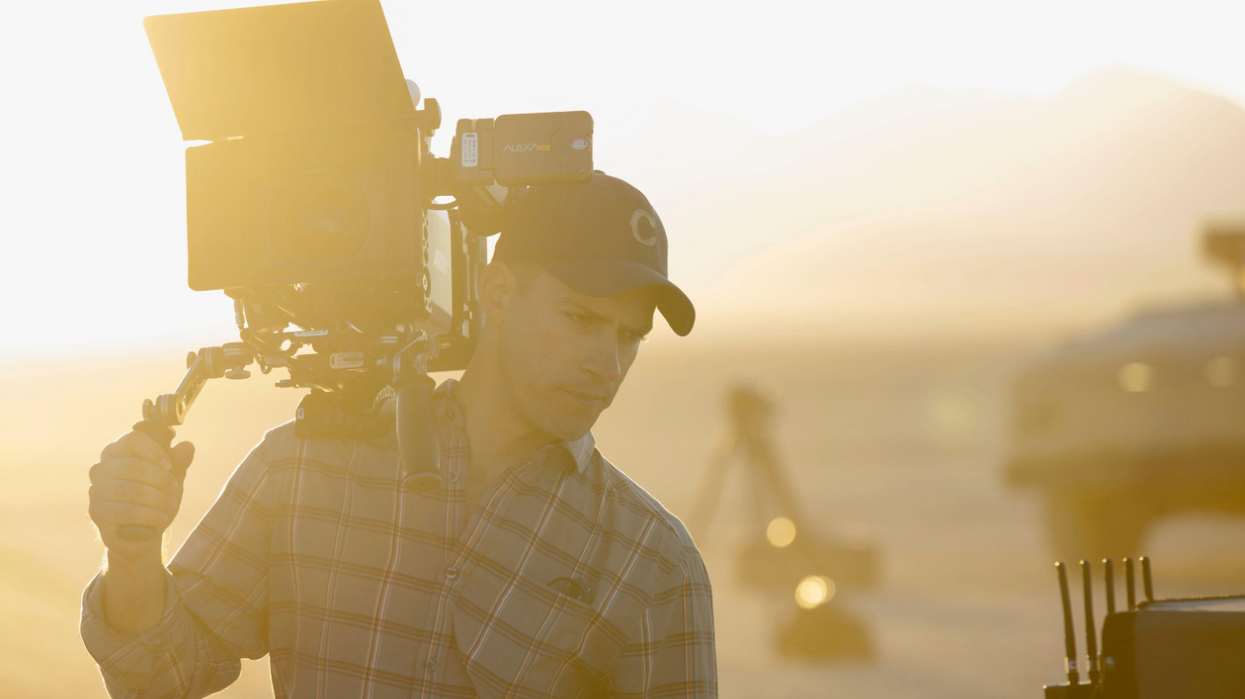
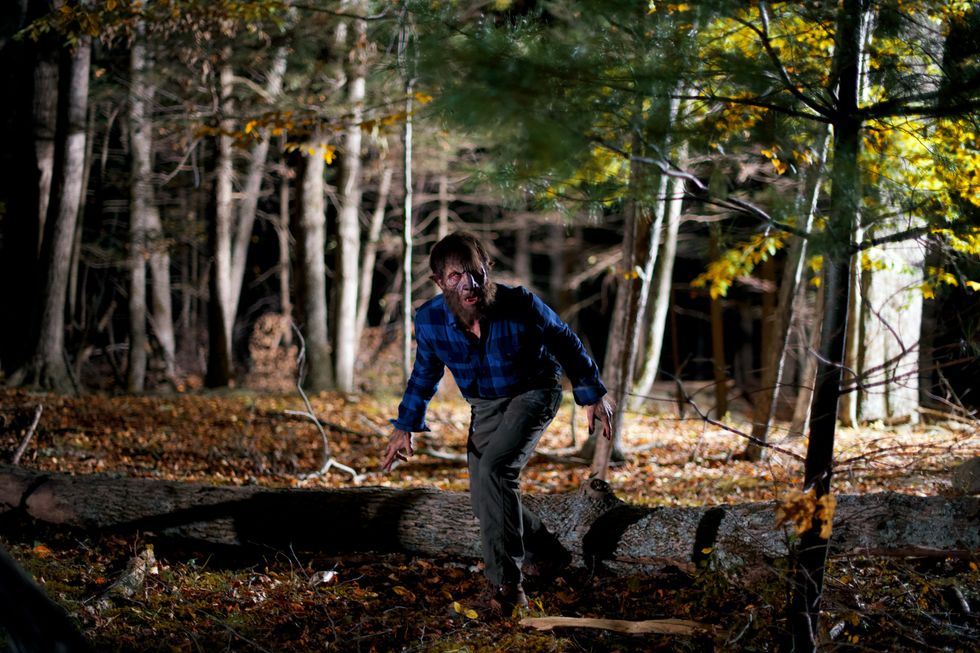 'Blackout'Bahram Foroughi
'Blackout'Bahram Foroughi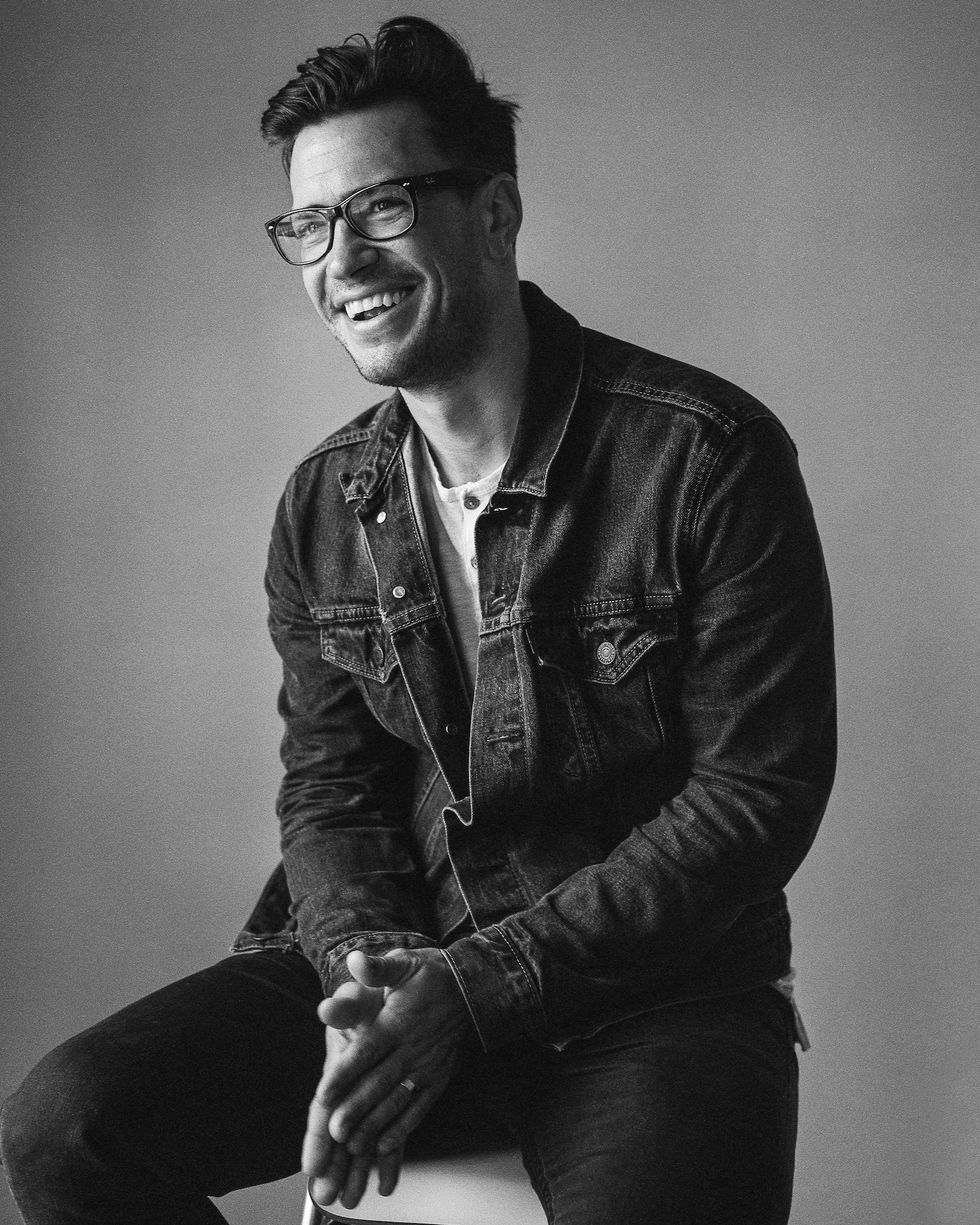 DP Collin Brazie
DP Collin Brazie 'Blackout'Glass Eye Pics
'Blackout'Glass Eye Pics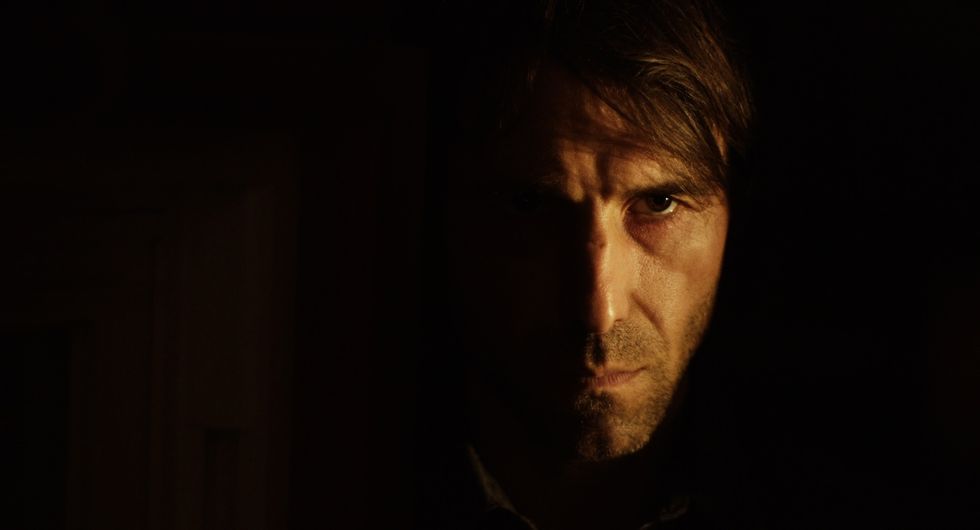 'Blackout'Glass Eye Pics
'Blackout'Glass Eye Pics









